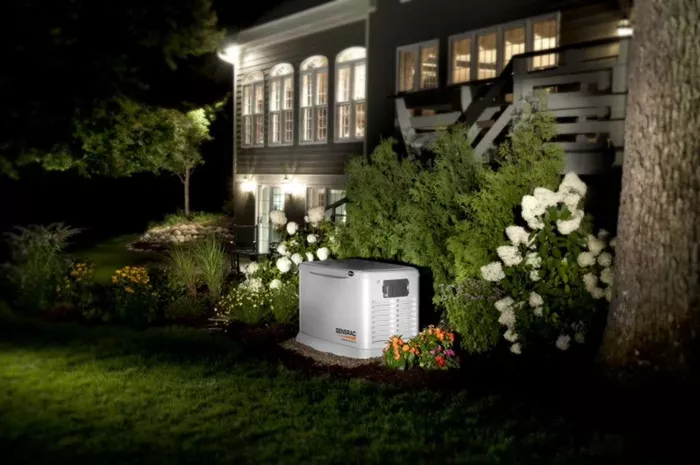Running a house off a generator can be essential during power outages or in remote locations without access to the grid. This guide will take you through the process of setting up and maintaining a generator for home use, ensuring you can keep your household running smoothly and safely.
Understanding Your Power Needs
Before you can effectively run your house off a generator, it’s crucial to understand your power needs. This involves calculating the total wattage required by all your essential appliances and systems.
List Your Essentials: Begin by listing all the essential appliances and systems you need to power, such as refrigerators, lights, heaters, water pumps, and medical devices.
Calculate Wattage: Check the wattage requirements of each item. Most appliances have this information on a label or in the user manual. Add up the total wattage to determine your overall power needs.
Consider Surge Power: Some appliances, like refrigerators and air conditioners, require additional power to start up. Ensure your generator can handle these surges.
Choosing the Right Generator
Once you understand your power needs, you can choose the appropriate generator for your home.
Portable vs. Standby Generators: Portable generators are versatile and less expensive but require manual setup and fueling. Standby generators are permanently installed and can automatically power on during an outage.
Fuel Type: Generators can run on various fuels, including gasoline, diesel, propane, and natural gas. Each has its pros and cons regarding cost, availability, and storage.
Power Output: Ensure the generator you choose can handle your calculated wattage, including surge requirements. It’s better to have a generator with a bit more capacity than you need to avoid overloading.
Installation and Setup
Proper installation and setup are crucial for safe and efficient operation.
Location: Place your generator in a well-ventilated area to avoid carbon monoxide buildup. It should be at least 15 feet away from windows and doors.
Transfer Switch: Install a transfer switch to safely connect your generator to your home’s electrical system. This prevents backfeeding, which can be dangerous for utility workers and damage your generator.
Fuel Storage: Store fuel safely in approved containers, and keep enough on hand to run your generator for several days. Check local regulations for fuel storage limits.
Running Your Generator
Once your generator is set up, knowing how to operate it safely is essential.
Starting the Generator: Follow the manufacturer’s instructions for starting your generator. This usually involves turning on the fuel valve, setting the choke, and pulling the start cord or pressing the start button.
Connecting Appliances: Use heavy-duty extension cords to connect appliances directly to the generator, or use the transfer switch to power your home’s circuits.
Managing Load: Don’t overload your generator. Monitor the total wattage of connected appliances and turn off non-essential items if necessary.
Maintenance and Safety
Regular maintenance and safety practices will keep your generator running smoothly and extend its lifespan.
Regular Maintenance: Follow the manufacturer’s maintenance schedule, including oil changes, air filter cleaning, and spark plug replacement.
Fuel Management: Use fresh fuel and add a stabilizer if storing fuel for extended periods. Drain the fuel system if the generator will be unused for a long time.
Safety Precautions: Always operate your generator outdoors in a well-ventilated area. Install carbon monoxide detectors in your home. Keep children and pets away from the generator while it’s running.
see also: How To Choose Generator For A 3-Bedroom House
Troubleshooting Common Issues
Even with proper maintenance, you may encounter issues with your generator. Here are some common problems and their solutions:
Generator Won’t Start: Check the fuel level, spark plug, and oil level. Ensure the choke is set correctly, and the fuel valve is open.
Power Output is Low: This could be due to a dirty air filter, low fuel quality, or an overloaded generator. Clean or replace the air filter, use fresh fuel, and reduce the load.
Generator Shuts Down Unexpectedly: Check for overheating, fuel supply issues, or a tripped circuit breaker. Allow the generator to cool down, refuel if necessary, and reset the breaker.
Summary
Running a house off a generator involves several key steps: understanding your power needs, choosing the right generator, proper installation and setup, safe operation, regular maintenance, and troubleshooting. By following these guidelines, you can ensure a reliable backup power source for your home.
FAQs:
How Long Can a Generator Run Continuously?
The continuous running time of a generator depends on the fuel type, load, and model. Portable generators typically run for about 8-12 hours on a full tank, while standby generators connected to a larger fuel supply can run for days.
Can I Run My Whole House on a Generator?
Yes, but it depends on the generator’s capacity and your home’s power needs. You’ll need a generator with sufficient wattage to handle all your essential appliances and systems, including surge power requirements.
What Type of Fuel is Best for Home Generators?
Each fuel type has its advantages. Gasoline is widely available but has a short shelf life. Diesel is more efficient and has a longer shelf life but can be harder to find. Propane and natural gas are cleaner options but require storage tanks and connections.
How Often Should I Perform Maintenance on My Generator?
Regular maintenance should be performed according to the manufacturer’s schedule. This typically includes oil changes every 50-100 hours of operation, air filter cleaning every 100 hours, and spark plug replacement every 200 hours.
Is It Safe to Use a Generator Indoors?
No, never use a generator indoors or in enclosed spaces. Generators produce carbon monoxide, which can be deadly. Always operate generators outdoors in a well-ventilated area.
Related topics:
- Best Affordable Solar Generators
- 5 Best Solar Generator Under $500
- EcoFlow DELTA Max 2000: A Comprehensive Review

